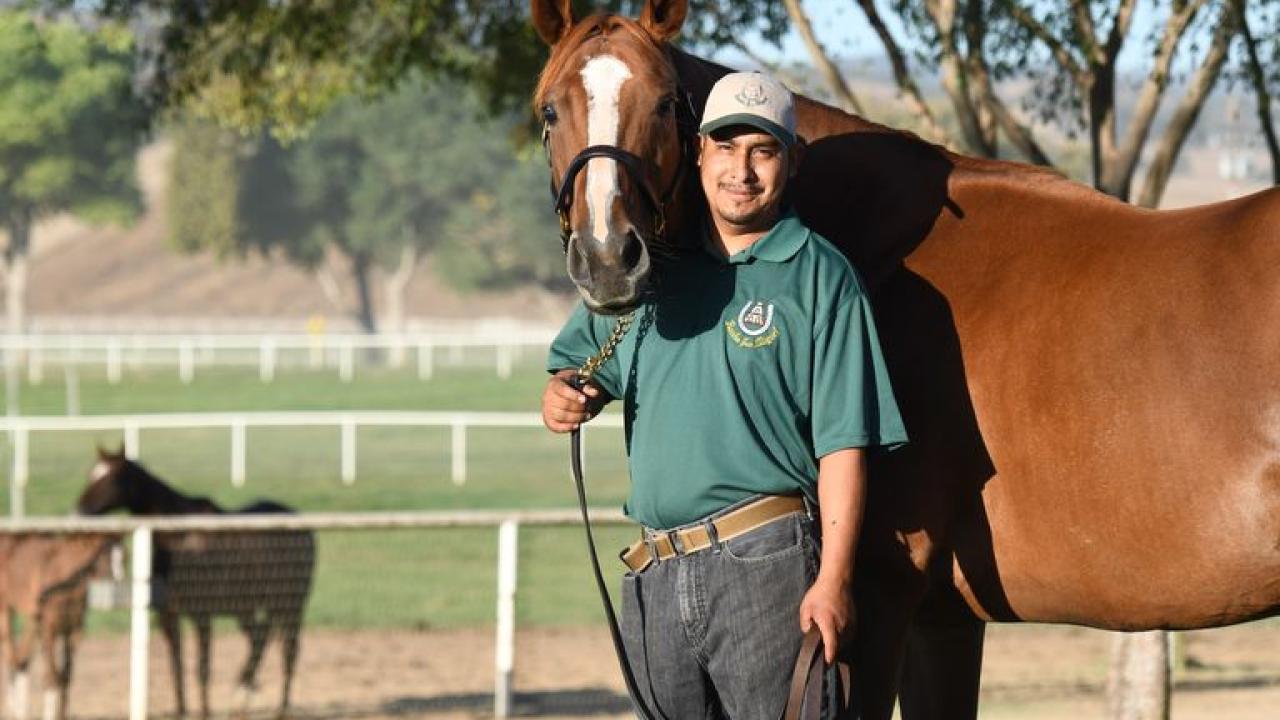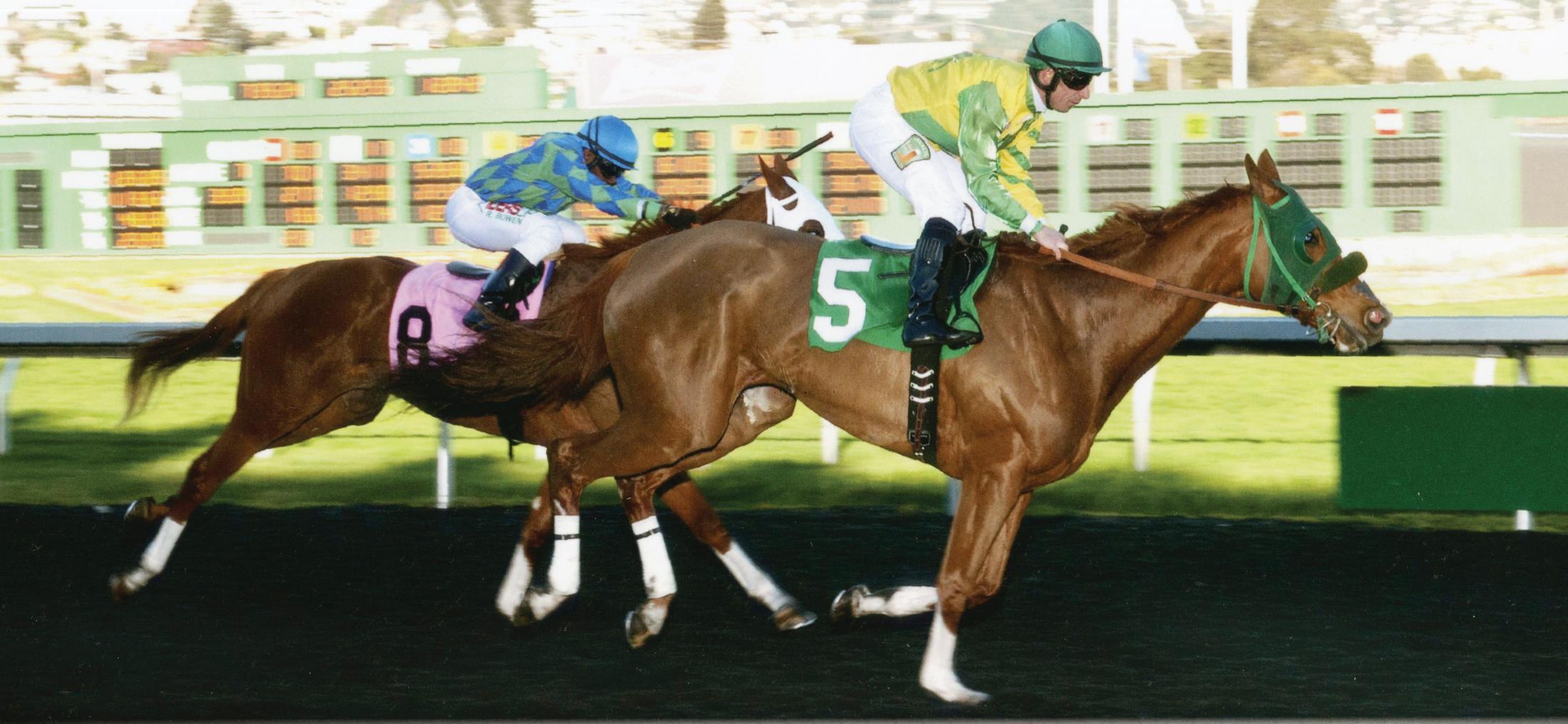
Racehorse Returns to Victory after Innovative Treatments
A leg injury can quickly spell the end of a racehorse’s career. For one racehorse in California, though, her injury offered an opportunity for innovative imaging and stem cell treatments, and ultimately a trip back to the winner’s circle.
In November 2016, Irish Streetsinger, a 3-year-old female Thoroughbred, was showing some lameness while training and was brought to the UC Davis veterinary hospital for evaluation.

Owner Bob McCabe was willing to do whatever it took to get Irish Streetsinger healthy again.
“We have a special connection,” McCabe said about his relationship with his horse. “She’s very affectionate, very loving.”
Radiographs showed tissue hardening in both carpal joints and minimal osteoarthritis in her left radiocarpal joint (similar to wrists or ankles on a human). Nuclear scintigraphy imaging of her forelimbs revealed mild to moderate lesions in the area.
Dr. Mathieu Spriet, of the Diagnostic Imaging Service, was certain she was a good candidate for a positron emission tomography (PET) scan to help specifically pinpoint her injuries. Few veterinary hospitals have PET scanners, and UC Davis is the only facility with one specific for horses. Meanwhile, Dr. Larry Galuppo, chief of the Equine Lameness and Surgery Service, was considering Irish Streetsinger for his clinical trial utilizing stem cells for treatment of equine lameness issues.
Both Drs. Spriet’s and Galuppo’s research into new treatments and modalities is backed by the school’s Center for Equine Health, an on-campus research facility that helps lay the groundwork for the latest clinical advancements. This “one team” approach of multiple specialists coming together to form a united, compassionate care team sets UC Davis apart from most specialty hospitals.
Irish Streetsinger’s PET scan showed specific indicators of injuries that would sideline her from the track. McCabe chose to enroll her in Dr. Galuppo’s clinical trial evaluating the use of allogeneic stem cells to assist with joint injury.
“These treatments offer hope she’ll return (to racing),” McCabe said. “And that’s what this business is all about – hope!”
In December 2016, Irish Streetsinger received injections of allogeneic stem cells and platelet-rich plasma, which is known to support healing and pain relief in joints. Her response to treatment was followed up with a repeat PET scan at six months, which showed evidence of marked healing of her injuries. Based on this information, it was recommended to institute a training regimen to bring her back to racing. Throughout 2017, she made a gradual improvement and returned to racing in October. By February 2018, Irish Streetsinger ran seven races with one victory at Golden Gate Fields.
Dr. Spriet continues to be the leading authority on equine PET scan research, and UC Davis remains the only equine hospital in the world with a PET scanner. Thanks to the prolific amount of research Dr. Spriet has performed since 2016 (scanning more than 100 horses), Santa Anita Park will soon install a standing PET scanner for early detection of pre-existing bone changes before they lead to catastrophic injuries. Dr. Spriet and his team will test that unit before installation.
Dr. Galuppo is currently conducting four clinical trials to assess the value of stem cells as a viable therapy to treat: tendon and ligament injuries; tendonitis and desmitis; intra-articular lesions; and laminitis. These projects—being developed in conjunction with the school’s Veterinary Institute for Regenerative Cures—are great examples of research and clinical faculty working together to apply “bench to bedside” translational medicine.
# # #
